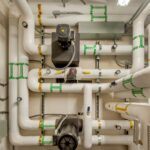Transformers are essential to our everyday existence and often operate in the background. One-phase transformers are particularly notable among them due to their ease of use and effectiveness. Whether you’re using these gadgets to drive little machines or power your house, knowing how they work will help you recognise how important they are.
Envision a seamless flow of energy via cables to power your gadgets and brighten your space. Single phase transformers are crucial parts that guarantee the efficiency and safety of this flow. They assist in reducing the high voltage energy coming from power lines to levels suitable for residential usage. However, just what are they?
We will explore single phase transformers in this article, dissecting their kinds, parts, building techniques, and uses. Come along on this fascinating adventure as we examine the basic ideas that underlie one of the most important aspects of electrical engineering!
Single-phase transformer applications
Single phase transformers are used in many different industries for a wide range of purposes. They are necessary in both home and business settings due to their adaptability.
Single Phase Transformer is often used in houses to distribute electricity. They reduce the high voltage power coming from utility lines to a level that is appropriate for using in home appliances. This guarantees the safe and effective operation of everything, including your television and refrigerator.
These transformers are essential to the functioning of equipment in enterprises. Often, equipment needs a certain voltage level, which single phase transformers give by modifying the electrical supply incoming. The lifespan and steady functioning of industrial machinery are supported by this accuracy.
Single phase transformers are often used in telecommunications networks. They contribute to the maintenance of steady power supply for communication devices, guaranteeing uninterrupted and error-free connection.
Single phase transformers are beginning to be used by renewable energy sources as well. For example, they are often used in solar panels to convert produced DC (Direct Current) into AC (Alternating Current), which facilitates an easy connection to the current grid system.
Single phase transformers are useful in a variety of applications, from sustaining large-scale processes to powering tiny electronic gadgets. They are dependable and efficiently meet different power requirements.

Single-phase transformer types
There are many varieties of single phase transformers, each intended for a particular use and set of specifications. The step-up transformer is the most often used kind. This device is necessary for long-distance power transmission since it raises voltage from a lower to a higher level.
However, step-down transformers do the exact reverse. They provide safety and compatibility with home equipment by lowering voltage levels.
The isolation transformer is an additional intriguing version. Maintaining voltage levels while preventing shock dangers, it divides several circuits.
Additionally, autotransformers exist that perform both main and secondary duties with a single winding. These may not provide electrical isolation, but they are often more affordable and small.
The doughnut-shaped toroidal transformers are one kind that is available. Because of their effectiveness, they provide little electromagnetic interference and are often used in audio equipment.

The construction and components of a single-phase transformer
To effectively transmit electrical energy, a single phase transformer is made up of a number of essential parts. The most important component is the core, which is usually composed of silicon steel that has been laminated. Eddy current energy loss is reduced by this design.
Voltage level transformation requires windings. They are composed of two separate coils, called main and secondary, that are wound around the core using copper or aluminium wire. A magnetic field is produced by these windings when an electric current passes through them.
To avoid short circuits and guarantee safety while operating, insulation materials are used to separate these wires. Air or oil are often employed as cooling agents in addition to insulation.
The complete system is housed in a tank that permits heat dissipation while providing protection from external elements. For power distribution systems to be reliable and efficient, every component is essential.
















